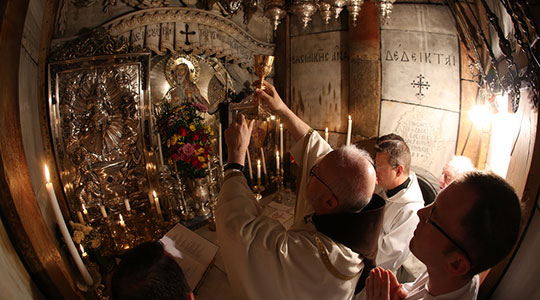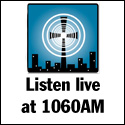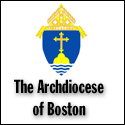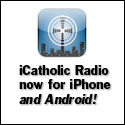Summary of today’s show: Cardinal Seán went on pilgrimage to the Holy Land with 29 priests from Boston, including Fr. Paul Soper, who talked with Scot Landry and Fr. Matt Williams about the places he visited that most moved him, places that we know with great reliability are the places mentioned in the Gospels, and how last Saturday was one of the three most amazing days in his life, taking him from the Tomb of Christ to the manger in Bethlehem and to the Upper Room where Christ instituted the Eucharist in the Last Supper and the Holy Spirit descended upon the Apostles on Pentecost, all in one day.
Listen to the show:
Podcast: Play in new window | Download
Watch the show via live video streaming or a recording later: BostonCatholicLive.com
Today’s host(s): Scot Landry and Fr. Matt Williams
Today’s guest(s): Fr. Paul Soper
Links from today’s show:
- Read the blog posts from the Holy Land at TheGoodCatholicLife.com
- Photos from the Holy Land pilgrimage
- Videos from the Holy Land pilgrimage
Today’s topics: Returning from the Holy Land
1st segment: Scot Landry and Fr. Matt Williams discussed the interfaith service being held at the cathedral of the Holy Cross tomorrow at 11am. It’s not an event being run by the Archdiocese of Boston. We’ve opened our house, one of the largest house of prayer in New England, so we opened it to allow people to pray. We’re being hospitable and kind. It does not imply endorsement of points of view. Gov. Patrick asked the archdiocese to allow this use and to work with Rev. Liz Walker who he asked to coordinate this event.
Fr. Matt discussed the monthly LIFT gathering for youth and young adults he had last night with many youth and young adults who came together to pray in this difficult time.
Fr. Matt discussed the importance of having our archbishop back among us at this time. Scot said Fr. Matt said yesterday in his holy hour that this experience brings us back to Good Friday and the cross, but that we must move forward to Easter Sunday.
Scot welcomed Fr. Paul Soper and said today he will be talking about his experience of going to the Holy Land with Cardinal Seán and 28 other priests from the Archdiocese on a pilgrimage to amazing holy places. Fr. Paul said it was amazing to be there, but amazing in a different to come back at this time with the people of Boston. Fr. Paul said it gives him all the more connection to our Cathedral of the Holy Cross and to the archdiocese, having been in those places. He noted that in tomorrow’s service, we bring everything we are as Catholics, including strength and light and forgiveness. Scot noted we may not agree with all that is said tomorrow, theologically or politically. How can we approach that as Catholics? Fr. Paul said we must be secure in what we believe and not let someone else’s beliefs rattle our own.
Fr. Paul said in talking to the Franciscans working in the Holy Land and to the Latin Patriarch in Jerusalem, he learned how difficult it is for Muslims and Jews to talk to one another, but it’s not difficult for Catholics to speak to Muslims or to speak to Jews, so the Church becomes an important bridge despite being just 1 percent of the population because we are not afraid of that conversation.
Fr. Matt said we have to be careful to become overreactive. We should focus on what unites us. People will not be using the podium to be divisive. The Catholic comes to this by referencing the elements of beauty and goodness and truth because that comes from God and then we want to pray that they come to the fullness of redemption found in Jesus Christ. Use this opportunity to pray for them, by taking the negative emotion as an opportunity for prayer.
Scot said praying all together is a path to hope over and above a militant atheism that rejects that possibility. How can we respect our rights to pray together in the public square, not just on Sundays? We need to support each other, whatever our faith, in defending our right to pray where we can and will.
2nd segment: Scot said Fr. Paul worked closely with George Martell to bring us all on a virtual pilgrimage to the Holy Land through photos and videos and blog posts. He asked Fr. Paul what theme stands out from his time in the Holy Land? Fr. Paul said the theme is that there’s nothing vague about the Holy Land. There is a high degree of reliability in knowing where the actual events took place, but even when there is question, it is clear that Christianity is an historic religion in which particular things definitely happened in particular places. The pilgrims debated, for instance, about the location of the Ascension. It took place in either Jerusalem or Galilee. It definitely took place in one of those places. Jesus was born in Bethlehem, maybe not in this exact place here, but not 5 miles away. He was a particular individual in a particular place. When you visit the site of the Annunciation, there is a big sign that says, “Here the Word was made flesh.”
Scot said the trip was broken into two part: Galilee and Jerusalem. He asked what was he most anxious to preach about. Fr. Paul said in Nazareth, there is a church built over the home where the Annunciation occurred. He said that from early times pilgrims visited this site, from the beginning of the second century. These would be the grandchildren of those who were there at the time and so this is personal family history, not generic history. He said when the Emperor Hadrian wanted to stamp out Judaism at the end of the 1st century, making no distinction between Christianity and Judaism, he torn down the buildings and built giant Roman temples over them, which permanently marked the locations until Christianity was legalized.
Fr. Paul said he isn’t easily outwardly excited about spiritual places, but this place set him going. There was an extraordinary outpouring of the spirit in his heart that had nothing to do with his head.
Another place was the location on the Sea of Galilee where Jesus was on the shore after the Resurrection and called to the apostles who were fishing and fed them a meal. He noted this was in the northwestern part of the sea of Galilee. There are seven springs that warm the normally cold sea, and this is where the large fish congregate. The seven springs are like the seven sacraments and they draw in the large fish and St. Peter draws the fish into the net (the Church), which isn’t broken. He drags them to shore and brings them to Jesus. There is a rock there on which Jesus laid out another Eucharistic meal and the fish. That rock is there in the church and the pilgrims bend down and kiss it. It’s called the site of the Primacy of Peter, the primacy of love where Peter tells Jesus he loves Him. Caesarea Philippi is the primacy of Peter in jurisdiction as foundation of the Church.
This could also be the place of second chances. The forgiveness of Christ was counter to the theology of the world around them. Great labors were usually required to receive forgiveness, but all Peter did was ask for forgiveness and offer his love to Christ.
Fr. Matt asked how they entered each site. Fr. Paul said each day was so packed, by the evening they were too tired to think about the next day, but as they arrived at each site, they would read the Gospel passage related to the site. They also heard from Fr. Francesco and Fabrizio, both Scripture scholars, who would give them background on the history and archeology and then a deep and personal account on the event in the Gospel for his life or the life of the Church. Either they would read the Gospel or sing it. They would take time to pray. After going to the site of the baptism of John in the Jordan River, they renewed their baptismal vows and Cardinal Seán and washed their heads in it.
Scot said Fr. Paul wrote about God choosing to enter the world at a particular time. One of the big mysteries of Christ is God becoming man, taking on our flesh. The graces of being in that place where God chose to enter the world in that way of taking on our flesh would be awesome to ponder. Scot said it’s easy to say prayers over and over and not stop to think about what it really means. But to be in the place it happened would make you stop. Scot said some of his favorite pictures were of priest praying in these places.
Fr. Paul recalled a great statement from G.K. Chesterton that what’s wrong with the world today is me. I am a broken man in a broken world. So what Christ took on was our broken humanity.
3rd segment: Fr. Matt asked about Caesarea Philippi. Fr. Paul said it took him most by surprise for what it looks like. First, the waters of the Jordan start there. Second, there was the site of the pagan temple of Pan, which was there for four or five hundred years before Christ. Third, there is a giant rock hill there. So when Jesus says to Peter that he will be the Rock and the gates of hell will not prevail, He is also talking about about the place they’re in. Christ says to Peter: I can pour into grace sufficient to change the world, but you have to give Me all of you. If you give Me everything you are, including your name, that gift will change the world and all the temples and the rest will fall into ruin.
Fr. Matt and Fr. Paul point out the Jews did not worship here in the pagan sacrifices. Fr. Matt said you can imagine Christ pointing to the pagan temple as he says, “The gates of hell will not prevail.”
On Jerusalem, having just experienced Holy Week and Easter and hearing the events that took place in Jerusalem, what were the highlights for him there? Fr. Paul said in one day the group celebrated Mass in the Tomb of Jesus inside the Church of the Holy Sepulchre, 31 of them standing very close together. There is an outer tomb and inner tomb. The Liturgy of the Word was in the outer tomb and the altar for the Liturgy of the Eucharist was in the inner tomb. They sent the oldest and youngest priests on the pilgrimage in with Cardinal Seán. The inner tomb could hold maybe three people. Through the course of the Mass, each priest got to stand in the tomb for a moment. What can one say about the events that happened here? This is where the Resurrection happened. The place of the Crucifixion is within the same church and the place where Christ’s body was prepared for burial.
The same day they went to Bethlehem where Christ was born to the Church of the Nativity. The crowds there were bigger than anywhere else on the trip. It took them almost three hours to get into the grotto marking where Christ was born. For Fr. Paul it was a moving experience. He recalled how Bethlehem was really crowded at the time of the census and Joseph and Mary couldn’t find a place either. When they went back up into the church from the grotto, Fr. Paul wept and wept. He’s not sure why and it’s unusual for him, but he’s at peace with that. Later that night they were able to have an extraordinary moment of prayer in the Upper Room. Within 24 hours they were at the site of Good Friday, Easter, Christmas, Holy Thursday and Pentecost.
Scot noted that Jesus didn’t just have the Last Supper there. Fr. Paul said the Apostles were in the Upper Room on the evening of Easter Sunday, then a week later when Thomas was with them, then 50 days later on Pentecost. Those were the walls that shook when the great fire of theHoly Spirit descended. This was the room where the Eucharist was instituted, those were the walls that shook. They renewed the vows of their priesthood in that place with Cardinal Seán. He felt the Holy Spirit there more than at any other place. He said he doesn’t remember the day of his baptism. He remembers the day of his ordination. But this is the third great day of his life.








Comments Closed